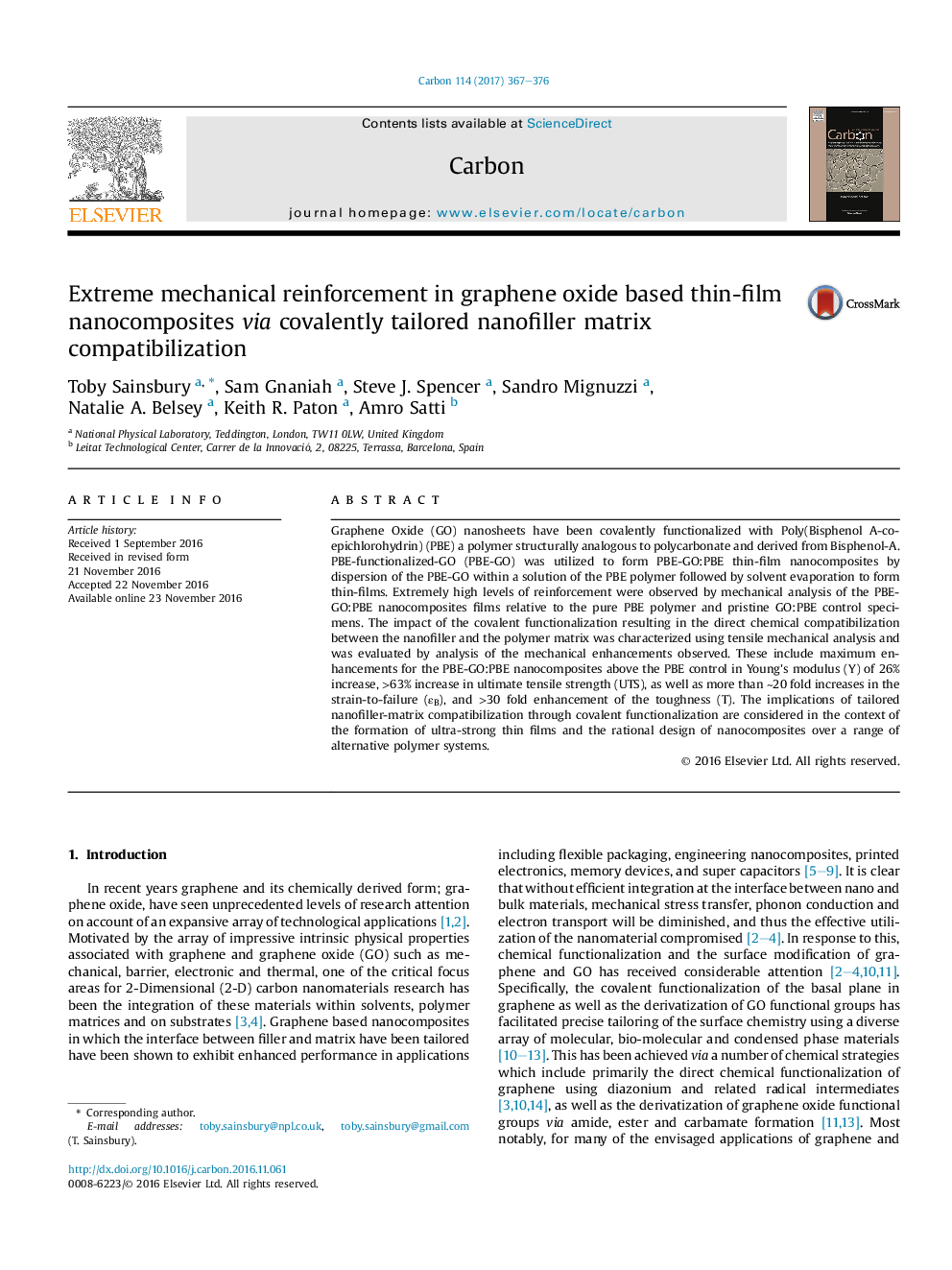| Article ID | Journal | Published Year | Pages | File Type |
|---|---|---|---|---|
| 5432524 | Carbon | 2017 | 10 Pages |
Graphene Oxide (GO) nanosheets have been covalently functionalized with Poly(Bisphenol A-co-epichlorohydrin) (PBE) a polymer structurally analogous to polycarbonate and derived from Bisphenol-A. PBE-functionalized-GO (PBE-GO) was utilized to form PBE-GO:PBE thin-film nanocomposites by dispersion of the PBE-GO within a solution of the PBE polymer followed by solvent evaporation to form thin-films. Extremely high levels of reinforcement were observed by mechanical analysis of the PBE-GO:PBE nanocomposites films relative to the pure PBE polymer and pristine GO:PBE control specimens. The impact of the covalent functionalization resulting in the direct chemical compatibilization between the nanofiller and the polymer matrix was characterized using tensile mechanical analysis and was evaluated by analysis of the mechanical enhancements observed. These include maximum enhancements for the PBE-GO:PBE nanocomposites above the PBE control in Young's modulus (Y) of 26% increase, >63% increase in ultimate tensile strength (UTS), as well as more than â¼20 fold increases in the strain-to-failure (εB), and >30 fold enhancement of the toughness (T). The implications of tailored nanofiller-matrix compatibilization through covalent functionalization are considered in the context of the formation of ultra-strong thin films and the rational design of nanocomposites over a range of alternative polymer systems.
Graphical abstractDownload high-res image (282KB)Download full-size image
